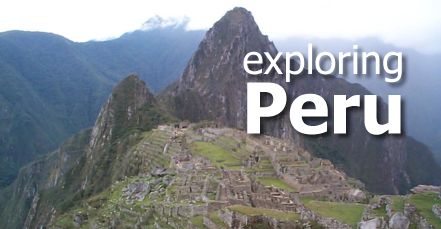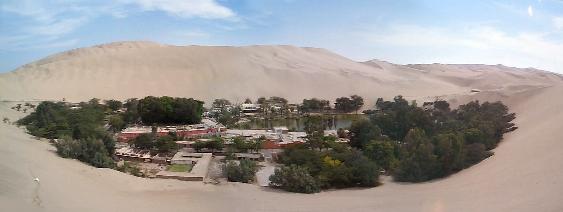The spectacular setting is the real reason to visit the Incan ruins at Machu Picchu. Its mountaintop location is surrounded on three sides by a dramatic whitewater river gorge. Beyond this are mountains so steep that they defy life's attempts at colonization -- only a small dusiting of green shrubs dare to inhabit the sheer grey cliffs. The altitude is so high that visitors here will literally find their heads in the clouds. Constatly shifting fog gives the ancient ruins an even more surreal look. But archaelology buffs should note that little is known about these ruins. When Western explorers first stumbled upon the isolated location in 1911, the city had been abandoned for centuries. The lack of a written Incan language means that there is no historical record. Thus, guides who take you through the ruins are recounting inspired guesswork at best. For this reason, I believe the site is best leisurely explored on your own.
Tourists are now returning to Machu Picchu in large numbers, reassured by the defeat of the ruthless Shining Path guerillas that terrorized the surrounding areas throughout the 1980s and early 1990s. The ruins and the nearby city of Cuzco are unique gems. The Incan capital when the Spaniards arrived, Cuzco soon became an isolated backwater, helping to preserve its beautiful colonial churches and remnants of Incan stonework. The city today is a friendly, clean, beautiful base from which to absorb Peruvian culture. Below the central mountains, is the modern capital of Lima and the coastal desert. This desert is so arid that nothing grows here. Huge sand dunes, miles long and hundreds of feet high, dominate the coastline. In this region four hours south of Lima is the desert oasis of Huacachina. A natural spring here nurtures a ring of fruit trees and delights swimmers who come to relax by the surrounding restaurants and hotels. From here, it is easy to visit the Nazca Lines -- the gigantic and ancient patterns carved in the sand in the area. Also worth visiting are the Ballestas Islands in the Paracas Nature Preserve, where abundant sea lions live alongside Peruvian boobies, humboldt penguins, and numerous other sea birds. If you plan to visit Peru, you may find the following tips helpful:
|


